Did you know that animals are cremated along with the bag they were transported to the crematorium in? The majority of crematoriums do not remove animals from their transport bag prior to incineration. Therefore, it is important that we are environmentally conscious of what these bags are comprised of.
Can EUTHABAG be buried?
Yes. The cover contains no heavy metals or chemical components that can contaminate the soil. It is for this reason that the recycled material we use is post-consumer and not industrial.
It is also important to know that The AVMA 2020 Euthanasia Guidelines are very clear on the veterinarian's liability on animal burying:
"Serious repercussions may occur when veterinary health professionals who should be well informed about the necessity for proper disposal of animal remains, fail to provide it, or fail to inform their clients how to provide it. Cases of suspected wildlife death from animal remains containing pentobarbital are investigated by the regional US Fish and Wildlife Service law enforcement office. Animal remains containing pentobarbital are potentially poisonous for scavenging wildlife, including birds of prey, carnivorous mammals, and domestic dogs. Federal laws protecting many of these species apply to secondary poisoning from animal remains that contain pentobarbital and may carry civil and criminal penalties, with fines up to $500,000 and incarceration for up to 2 years."
Is EUTHABAG ecological?
Yes. Since the vast majority of EUTHABAGs will end their lives in cremation, it was imperative that they didn’t contain vinyl or chlorinated compounds nor produce dioxins or furans at incineration.
EUTHABAG is made in part from recycled material. Our objectif is to bring it to 100% in 2025 while maintaining the product’s resistance.
Compared to the plastic bags used currently, EUTHABAG is more ecological because it is made of recycled material versus virgin raw oil for most commonly used plastic bags. Garbage bags are made of PE. Compared to PE, PP produces less solid waste when cremated or buried but both of them produce carbon dioxide and carbon monoxide.
The adhesive used in EUTHABAG is made from rosin resin and polymer resin (styrene-butadiene), which is considered synthetic rubber. This mixture forms a powerful adhesive free of volatile organic compounds.
The white screen printing ink used is water-based.
In this video, Dr. Kathleen Cooney shares how EUTHABAG prevents pentobarbital from being released into the environment when a pet is buried.
Is EUTHABAG biodegradable?
No, and for good reasons. According to regional statistics, more than 90% of animals will be cremated and not buried.
Many of the products currently on the market, used to bury animals, have claimed to be comprised of “Biodegradable matter”. However, this “Biodegradable matter” is usually comprised of starch from genetically modified corn which deals extensively with the corresponding pesticides used to secure the crops. Additionally, after a few months, biodegradable bags may degrade during storage.
EUTHABAG is not biodegradable in the short term. The speed of deterioration is not a priority, because:
A dead animal can pose a danger to wildlife and should ideally be bagged. Most municipalities ban the burial of animals outside of agricultural production.
Animal remains can be inadvertently dug up by animals or people. So it's best if leftovers are wrapped.
More and more families are exhuming the bodies of their animals when they move. It is easier and more aesthetic if the body is wrapped. The remains can be cremated safely in an EUTHABAG.
Some believe that a blanket is a good option for burial. However, the majority of these are not biodegradable and remains can be damaged by cremation when the blanket contains polyester.
Our primary concern for the environment is to prevent soil and water contamination. As tissues decompose, pentobarbital may leach into the soil and from there migrate to groundwater.
In 2016, ongoing biodegradability studies in tropical and temperate environments were started. Findings after 8 months revealed that the animals’ skeleton was dry and totally devoid of flesh. It was also discovered that necrophagous insects had pierced the EUTHABAG in 6 places to carry out their work. In a temperate environment, exhumations carried out in 2018 showed us that only the bones and skin remained of the feline remains buried in 2016.
5 ecological benefits when using EUTHABAG:
The Necrophagous insects and microorganisms have access to the remains to decompose the body.
When buried, the remains are contained and do not leach euthanasia products or germs into the environment.
EUTHABAG does not contain heavy metals or chlorinated compounds and can therefore be buried or incinerated without toxic fumes.
The glue (vegetal-based) and the ink (water-based) used are environmentally safe.
The EUTHABAG, as well as its packaging box is made of recycled material.
EUTHABAG reforests and protects vulnerable habitats in America by planting thousands of native trees in Canada and Costa Rica. More information on our reforestation program here.
Wildlife needs a safe place to live their life.





